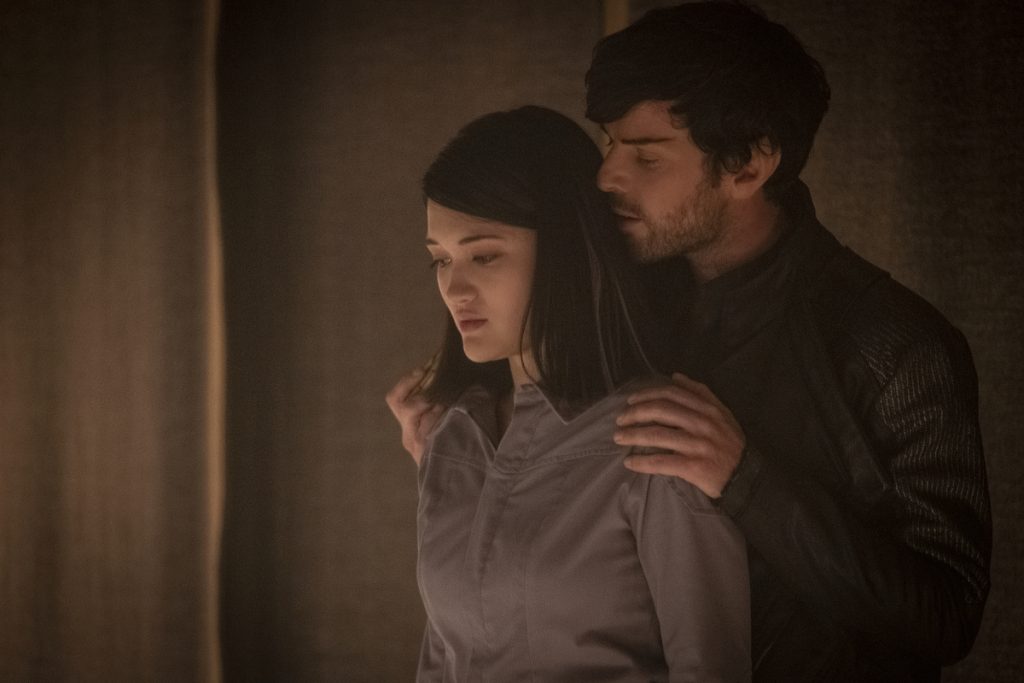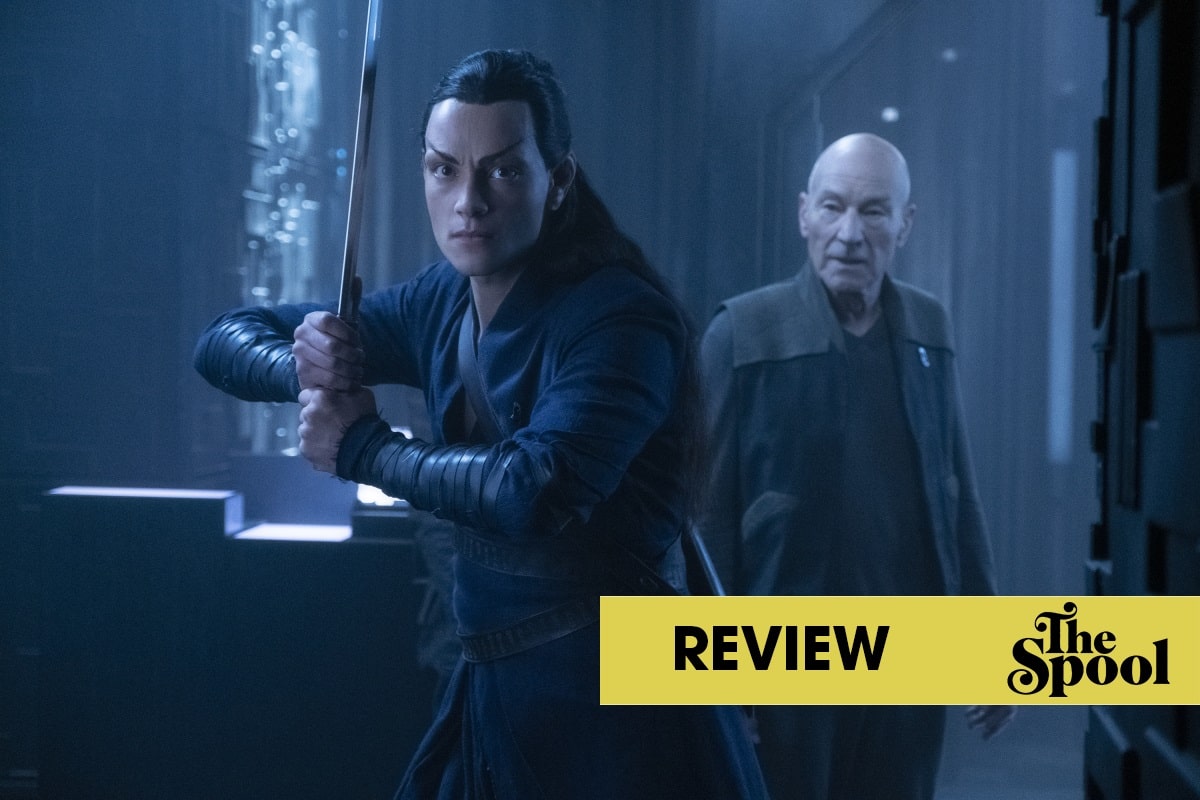Read also:
How to Watch FX Live Without CableHow To Watch AMC Without CableHow to Watch ABC Without CableHow to Watch Paramount Network Without CableA sea of good ideas gets drowned in cliche as Picard and Soji face the truth.
Star Trek: Picard has plenty of good ideas, especially in “The Impossible Box”. Soji (Isa Briones) journeying through her subconscious to realize her true nature is a good idea. Picard (Patrick Stewart) suffering PTSD from returning to a Borg cube, only for Hugh’s (Jonathan Del Arco) presence to reassure him that recovery’s possible is a good idea. Dr. Jurati (Alison Pill) and Raffi (Michelle Hurd) each feeling more than a little empty, defeated, and scared after the events of the prior episode is a good idea.
The problem is that the show lacks any subtlety when communicating these ideas. In fairness, Star Trek is a pretty lousy place to go for subtlety. In the old days, hardly an episode went by where Kirk or Picard or Janeway didn’t sum up the theme of the week with an instructive speech that may as well have been a postcard to the audience. But there was also more artifice involved in those shows, and on T.V. in general, at the time. Prior Star Trek series often conveyed a larger-than-life, even stage-y quality that made that heightened dialogue feel part and parcel with the presentation as a whole.
Television’s changed a great deal since those shows went off the air, however, and Star Trek: Picard admirably tries to keep up with the times. There’s a greater effort at naturalism at play here, meant to keep up with a post-Sopranos (and hell, post-Battlestar Galactica) world, where we expect our prestige series to be more grounded in realism when it comes to tone and performance, while not skimping on the space-faring genre thrills.

So the mood and atmosphere in an episode like “The Impossible Box” are meant to be more restrained. The responses and reactions and even the body language are intended to be more organic. The whole enterprise (no pun intended) is meant to feel more real and more down to earth (so to speak) than the colorful confines of 1966 or the heightened reality of 1987 on television.
And yet, this show still wants to do the same kind of big speeches, the same kind of didactic dialogue, and the same kind of over-the-top exchanges that the Star Trek series of the past did. The language deployed hasn’t kept up with the rest of the presentation. So when you have Narek (Harry Treadaway) pontificating about an all-too-obvious metaphor involving his Romulan Rubik’s cube, or a variety of characters clumsily delivering rank exposition to bring the audience up to speed, or Picard effectively announces that the Borg should be seen as “victims, not monsters,” it feels out of step with the rest of the production and weakens the delivery of those ideas.
Thankfully, even though “The Impossible Box” still struggles to deliver on a scene-to-scene basis, it at least manages to dispense with much of the series’s narrative wheel-spinning. That’s right, cadets, we’ve got genuine plot movement this week! Picard and company arrive at The Artifact! Narek uses Romulan meditation techniques to activate Soji and glean the location of the (maybe?) Synth hideout! Picard finally finds his android MacGuffin and the two escape for (hopefully) greener pastures! Whatever the episode’s other faults, it meaningfully advances the overall arc, which is welcome.
And yet, this show still wants to do the same kind of big speeches, the same kind of didactic dialogue, and the same kind of over-the-top exchanges that the Star Trek series of the past did.
The same goes for Picard’s reunion with Hugh. Their scenes together are beyond heavy-handed, but you’d have to be made of stone (or still a part of The Collective) not to be at least a little moved at the pair’s embrace and all the history and healing it entails. Granted, it feels like Star Trek has been revisiting Picard’s Locutus-based trauma since the final scene of TNG’s “The Best of Both Worlds”, so the approach a touch tired at this point.
Still, “The Impossible Box” ties Picard’s chance for recovery with Hugh’s. The former Borg represents a worthy cause that Picard supported despite the skepticism of his Starfleet superiors, one that, with the benefit of time, worked out in a heartening and encouraging way. Their joyful reunion tells Picard that if standing up for Hugh can work, maybe standing up for Soji can too, and help him heal from the last fourteen years of pain in the process.
But Soji is working through issues of her own. Narek, in his efforts to track down the rest of the Synths, figures out that Soji’s dreams are the key to the truths she can’t otherwise process. So despite their bland, “we both have secrets” romance, the show generates some intrigue from him prodding her to reenact those dreams, describe them, and challenge them until the truth emerges to them both.
Granted, more than anywhere else, this is where the show falls into a level of bluntness that weakens this otherwise momentous development. If you took a sip of Romulan Ale for every second the camera focused on Narek’s damn puzzle cube, you’d soon be more sauced than a Kelvan going shot for shot with Scotty. Still, there’s something gratifying about the show finally pulling the trigger on Soji’s dreamlike android epiphany (sans electric sheep, sadly) and using some impressionistic means to do so.

Those inside-the-mind sequences are themselves a bit stuck, and using dreams as a device to unveil both plot and personal revelation is well-worn territory. (There are, appropriately enough, shades of TNG’s “Phantasms” here.) Despite that, Soji seeing herself as a wooden doll and gaping at her father’s blank face carries a certain power. What’s more, the realization that your whole life, your whole being, is a carefully-constructed lie would be jarring, and this episode doesn’t shy away from that.
The catch is that it also doesn’t modulate anyone’s reaction to any of it for the type of show Star Trek: Picard wants to be. Everything here is big: Soji’s discovery, Narek’s betrayal, Picard’s return, Hugh’s reunion, Raffi’s remorse, and Jurati’s pain. Ironically, that makes those emotions land with less force. There’s a human dimension missing from these moments, because the intimacy of them, the internal personal impact of them, is out of step with the bombastic deliveries and on-the-nose dialogue meant to communicate them. When a show is so clearly and so loudly trying to tell the audience how to feel, rather than simply letting it wash over them, the effort ends up feeling disconsonant and false.
That human dimension only comes through in Picard’s pleas for Soji to trust him and follow him to safety. That too is a good idea: a desperate chase and an unknown ally and an effort to escape. There’s similar excitement at the prospect of discovering the Synth hiding place that will no doubt be the site of a showdown with the Zhad Vash. But if Star Trek: Picard doesn’t tackle those ideas with more grace, with less bluntness, with a style of writing and performance to match its more realistic tone than in “The Impossible Box”, then the results will be as lost and confused as Soji.

